12th - 16th Dec 2023
 |
| Looking south down the island of Cijin. |
Cinjin Island is a long strip 5 miles long and only about half a mile wide. It runs up the western side of Kaosiung port and the northern end, with a large lighthouse, forms the harbour entrance.
Left: Metro to the Gushan ferry wharf.......
Right:........where these colourful little ferries depart every 15 mins for the 10 minute (500yds) crossing to the north end of the island. Cost: 30p!
Left: Boarding. I was followed by a helpful local chap and his family who were also 'touristing'. He took this photo so I'd better show it. I kept bumping into them during the course of the day. They thought I was following them; I thought it was the other way round!
Walking through the busy little town to the beach on the west side of the island, the first notable thing I came across was this elaborate temple (right). The life-size figures of priests (I think) lined the balcony at the front, and they were 'animated' to wave and bow to us. At the entrance was a stall selling, or trying to sell, model 'Buddhas' so you could take one home to pray to it. The fact that they cost between £50 and £200 (equivalent) depending on size, rather discouraged me....and I couldn't imagine lugging a Buddha around for the rest of my journey!
I walked towards the long high ridge and passed this 'statue' (right) on the way. I had read that the sea here has some fairly dangerous rip-tides and currents to sweep away the unwary swimmer. This fellow and his faithful friend would not have been much help I fear.
Left: On reaching the ridge there was an empty 'pill box' at the entrance to this sparkly lit tunnel ('tunnel of the stars' it is called) which took you under the ridge to the northern shoreline. I came to notice many such empty 'defensive fortifications' throughout Taiwan. I can't think why! The proximity of China may hold a clue?
After a long walk around the northern shore you come to the steep paths and steps which take you to the top of the cliffs. Quite a sweaty climb, but good exercise. At the western end is Cihou Fort. Right: The fort entrance. It was built by the Chinese in 1720, 'modernised' by the Quing Dynasty in 1824 and captured by the Japanese in 1895 (without much of a fight). Actually it is more of a large gun emplacement than a fort and housed, in the Jap days, 4 batteries of Armstrong 7" muzzle-loading guns (important info for my military readers). The fort never saw much action, even when held by the Japanese in WW2.
Left: Inside the fort. A fairly 'low-level' construction with accommodation along the lower deck.
Right: Looking in the other direction.
Left: .......and with good views over the surrounding land and sea which, I suppose, is a prerequisite for a fort with gun emplacements.
Left: While I was here there were scores of local schoolchildren visiting (the ones wearing orange). They seemed to be having a very jolly time with much singing, taking of group photos and climbing all over the fortifications (despite notices saying climbing forbidden). I didn't witness any casualties.
Left: At the eastern end is the lighthouse which overlooks the port/harbour entrance. It too had attracted many tourists. There is a decent café next door to it.....and more views over the port and city (PS. Kaohsiung is Taiwan's 3rd most populous city).
On descending from here I really did urgently need a cool, refreshing beer. As mentioned previously, Taiwan is not blessed with decent cafés and bars with outside seating. However, there was a very decent one (and only one) on the beachside; the Sunset Bar (right). I made a beeline for it and it also served some very good food. Much appreciated! I stayed here until after dark. If this was Thailand or Vietnam the beach would have had wall-to-wall 'places of refreshment' and other 'social facilities'.
The beach, and especially from up on the ridge, is famed for its dramatic sunset views. I must have missed them!
At risk of making this a rather 'over-long' blog, I will continue with my next day's venture in Kaohsiung. I have time on my hands where I am at the moment!
Back to the Gushan port area. On a tall forested bluff on the other side of the water directly opposite the lighthouse is what was the British Consulate Residence. The British had established one of several Taiwan trading posts here.
Right: Through another illuminated tunnel to the bottom of the steps, 127 of them, leading up to the Residence.
Left: The frontage of the Residence. Note the British style 'pillar box' (red post box). £2 entrance fee. It had great views over the city to the south and the port entrance.
The building has been maintained in pristine condition. It contains a small museum which displays, amongst old English tea services, portraits of British monarchs from Queen Victoria onwards (right).
.........and left. I'm sure you don't need me to identify them. Unless you are not British that is. In which case you will probably not be interested!
For some reason they seemed obsessed by the 'English Tea' tradition. Tea was served, including large cake stands, in the inside 'tea rooms' (right). They were all booked up!
Left: Also on the outside balcony. All tables taken. I resorted to going to the courtyard café at the back and ordered a cup of 'Earl Grey' tea. It tasted sweet and sickly and absolutely nothing like Earl Grey tea. Hey Ho! It's the thought that counts.
Right: The view over port and city from the back of the Residence.
Left: The temple which adjoins the main building. I don't expect the British Consul spent much time in here. Who knows?
Right: On the shoreside below the Residence is what was the 19th century British Consulate itself. It too has been carefully maintained.
Left: Outside the front door is a series of very realistic dioramas depicting life in this area in the 19th century.
I post below a selection of these dioramas. You can add your own captions!
Right: Inside there is a replica of the meeting, in 1858, between the British Consul, John Gibson, and the Chinese representative, Xian De Zeng (nice hat!), to discuss the Treaty of Tianjin. This treaty was designed to legitimise trade (esp. opium) and the work of British 'missionaries' amongst other things. The locals were not happy with the proposals. The talks here were not going well.
Right: Talking of British missionaries, this diorama depicts a zealous missionary doctor, James Maxwell, in 1865. He did great work curing the locals of many ailments, including endemic eye diseases and malaria etc. Unfortunately he rather overstepped the mark and 'evangelised' his treatment as 'miracles of God' and rather pissed off both the Chinese local government and the British hierarchy as a result of his OTT 'God-squadding'. He was sacked and sent packing back to England.
Phew, that was a long one (as the 'ASTTB'!). It completes my tour of Kaohsiung. Onwards onwards!

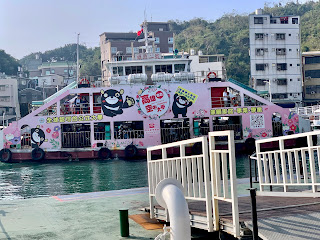
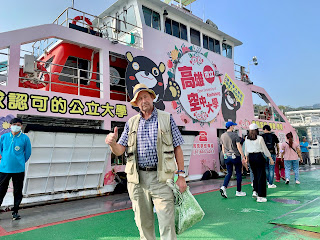







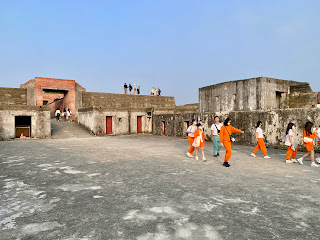
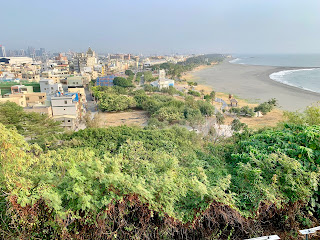




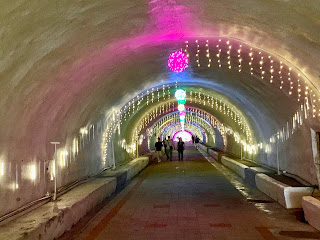


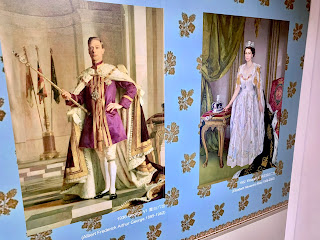

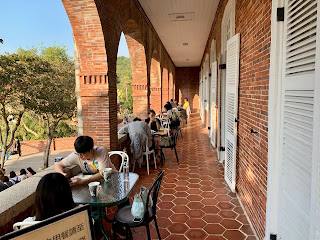









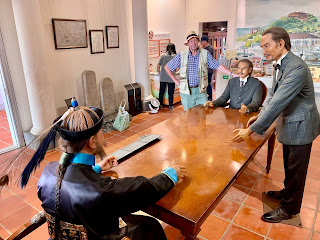

No comments:
Post a Comment